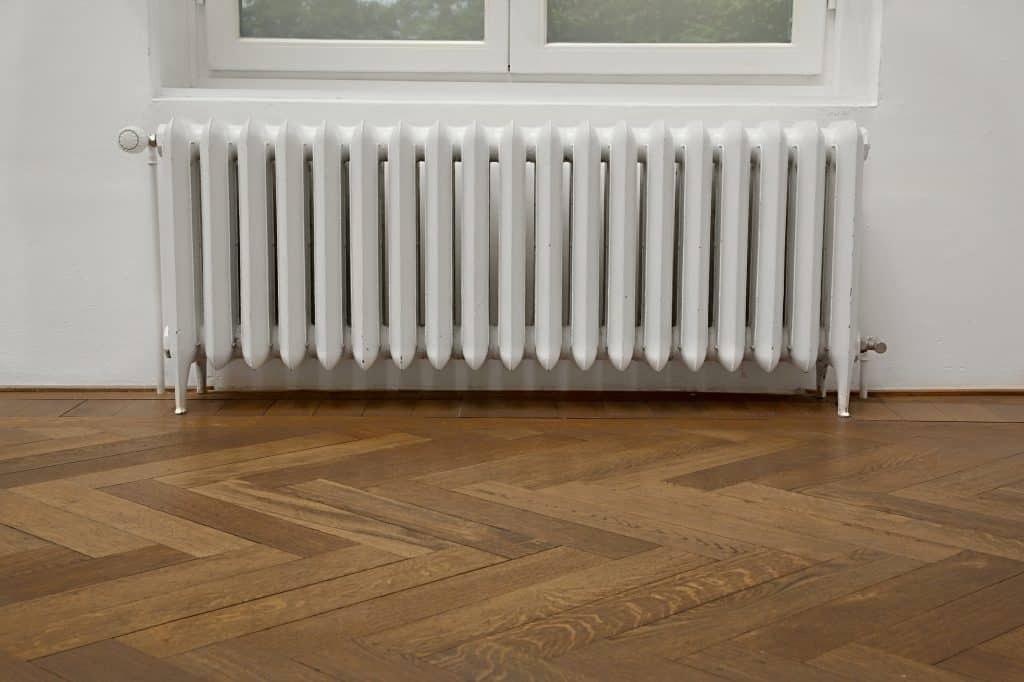Yes, homeowners can enhance the efficiency of their wood-burning stoves by integrating them with radiators and central heating, providing a cost-effective means of heating their homes.
You can use a wood-burning stove to heat radiators and central heating, and there are multiple ways to do it. For this, you will need a stove with a back boiler. The system should include a vent to prevent pressure buildup. To get hot water, you can connect your wood burner to a hot water cylinder.
Curious to learn more? Read on to discover detailed explanations and find answers to your lingering questions about this approach.

Can a wood-burning stove be connected to Central Heating?
You can use your wood-burning stove to run your central heating system. Many homeowners find this setup convenient because wood is a highly efficient and cost-effective fuel. Wood is carbon-neutral and therefore far more environmentally friendly than fossil fuels.
When planning the setup, the size of your property, and your heating requirements should be taken into consideration. You may install a new central heating system or add a boiler to your existing wood-burning stove.
The system will work efficiently only if your boiler works in harmony with your stove. You may add a clip-in back boiler or an integral boiler to your stove. Stainless steel boilers are highly durable.
However, back boilers are considered outdated, and heating engineers these days use an indirect connection when using a wood-burning stove to feed a hot water cylinder. A coil inside the cylinder receives heat from the wood burner and then transfers heat to the domestic hot water.
A heating engineer can help you figure out the required heat output for your home. Factors such as the size of your home, the level of insulation, and your geographical location go into the calculation.
Many people these days opt for underfloor heating. It operates at lower temperatures and can be perfectly combined with a heat pump. Heat pumps are remarkably more eco-friendly because their operations do not involve combustion.

How would the system work?
There are two basic ways to connect your wood-burning stove to your central heating system. You can do it either with a system zone or with a thermal store.
A system zone is a metal box with pipes that can be connected to your boiler. The system zone then feeds your central heating and hot water. It gives you the flexibility to run one boiler at a time or more simultaneously. You can use heat from the wood stove to heat the water in the cylinder.
The existing valves and controls can be used to heat the radiators, the hot water cylinder, or both. The installation process is not that hard, and the system is easy to maintain. However, one drawback of this approach is that you cannot store heat for future use.
Alternatively, you can connect your wood–burning stove to a thermal store that stores up heat for future use. It acts as a heat accumulator that allows you to combine other heat source systems such as your gas boiler, even solar panels.
This setup is very convenient if your only source of heat is a wood-burning stove. You can get heat even when the stove is turned off. If you want to free up some space, you can even replace the hot water cylinder.
To install a thermal store, you need a relatively large space. The mechanism of a thermal store is not complicated; it is basically a water tank with lots of points for pipe connections. However, you may not want to take it as a DIY project. Find a technician who has experience with thermal stores.
Can a wood-burning stove be connected to radiators?
Yes, a wood-burning stove can heat radiators. For this, you will need a wood-burning stove with a back boiler. When you light the stove, it heats the room and the boiler. For the system to work, you need a heat exchanger, a header tank, a pump, pipes, and radiators.
A high-quality wood-burning range cooker such as a Rayburn can run up to 20 radiators. These ranges come with thermostatic valves and other components that make it easy to run radiators and central heating. The units are available in many styles and sizes. Even the smallest Rayburn can fuel 2-3 radiators.
When connecting radiators to your wood-burning stove, make sure the radiators are large enough so that it can dissipate the heat coming from the heat exchanger. The setup is not simple, so consider getting in touch with a professional installer.
Can a wood-burning stove be connected to a combi boiler?
It is possible to connect a wood-burning stove to a combi boiler, but the process is complicated. This is because a wood burning stove is open vented, but a combi boiler is a sealed pressurized unit. Here is a video that offers a useful idea.
The best approach is to add a thermal store and connect it to your radiators. The thermal store, which is a large store of water, serves as a buffer.
Yet, the setup is likely to be costly, because a thermal store costs around $1500. It also requires major upheaval because the pipework needs to be changed. If it is a new property or the property is undergoing major renovations, consider investing in a thermal store.
Is it worth connecting a wood-burning stove and central heating?
Wood is an affordable, eco-friendly and efficient fuel, and can get the best out of your wood-burning stove by combining it with your central heating system. The basic idea is simple: your stove generates heat, some of it is transferred to the water tank, from which the hot water is pumped to the radiators. It is true that the setup poses some challenges, but it is absolutely worth it.
While combining a wood-burning stove can significantly reduce your fuel bills, finding an experienced technician may not be easy. To get the most economic heating, you have to make sure that the stove works in harmony with the boiler.
When designing the system, it is important to keep your specific heating requirements in mind. You may want to add a boiler to your stove or build an entirely new setup. The most efficient way to do it is to add a back boiler to your wood-burning stove. Boilers made of steel are more affordable than glass-lined boilers.
Conclusion
A wood burner produces pleasant heat, making your home cozy and comfortable, but you can also use the appliance to run your radiators and central heating. The wood stove may not produce enough heat to satisfy your demand for heating and hot water, but it will definitely take some strain off other heat producers.
Combining a wood-burning stove with radiators and central heating can be complex, and the exact procedure will depend on your heating requirements. In most cases, a vent must be included in the system to prevent pressure buildup.
Get the help of a professional heating engineer to connect your wood-burning stove to your central heating system. You may not want to take it as a DIY project. Hopefully now you have a better understanding of the procedure.
